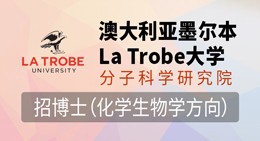Living Reviews in Relativity ( IF 26.3 ) Pub Date : 2024-07-22 , DOI: 10.1007/s41114-024-00051-y
Paulo C. C. Freire , Norbert Wex

|
The discovery of the first pulsar in a binary star system, the Hulse–Taylor pulsar, 50 years ago opened up an entirely new field of experimental gravity. For the first time it was possible to investigate strong-field and radiative aspects of the gravitational interaction. Continued observations of the Hulse–Taylor pulsar eventually led, among other confirmations of the predictions of general relativity (GR), to the first evidence for the reality of gravitational waves. In the meantime, many more radio pulsars have been discovered that are suitable for testing GR and its alternatives. One particularly remarkable binary system is the Double Pulsar, which has far surpassed the Hulse–Taylor pulsar in several respects. In addition, binary pulsar-white dwarf systems have been shown to be particularly suitable for testing alternative gravitational theories, as they often predict strong dipolar gravitational radiation for such asymmetric systems. A rather unique pulsar laboratory is the pulsar in a hierarchical stellar triple, that led to by far the most precise confirmation of the strong-field version of the universality of free fall. Using radio pulsars, it could be shown that additional aspects of the Strong Equivalence Principle apply to the dynamics of strongly self-gravitating bodies, like the local position and local Lorentz invariance of the gravitational interaction. So far, GR has passed all pulsar tests with flying colours, while at the same time many alternative gravity theories have either been strongly constrained or even falsified. New telescopes, instrumentation, timing and search algorithms promise a significant improvement of the existing tests and the discovery of (qualitatively) new, more relativistic binary systems.
中文翻译:

射电脉冲星的重力实验
50 年前,双星系统中第一颗脉冲星赫尔斯-泰勒脉冲星的发现开辟了引力实验的全新领域。第一次有可能研究引力相互作用的强场和辐射方面。对赫尔斯-泰勒脉冲星的持续观测最终证实了广义相对论(GR)的预测,并为引力波的真实性提供了第一个证据。与此同时,更多适合测试广义相对论及其替代品的射电脉冲星被发现。一个特别引人注目的双星系统是双脉冲星,它在几个方面远远超过了赫尔斯-泰勒脉冲星。此外,双星脉冲星-白矮星系统已被证明特别适合测试替代引力理论,因为它们经常预测此类不对称系统的强偶极引力辐射。一个相当独特的脉冲星实验室是分级恒星三重中的脉冲星,它导致了迄今为止对自由落体普遍性的强场版本的最精确确认。使用射电脉冲星,可以证明强等效原理的其他方面适用于强自引力体的动力学,例如引力相互作用的局部位置和局部洛伦兹不变性。到目前为止,广义相对论已经出色地通过了所有脉冲星测试,而与此同时,许多替代引力理论要么受到强烈约束,要么甚至被证伪。新的望远镜、仪器、计时和搜索算法有望显着改进现有测试,并发现(定性)新的、更具相对论性的双星系统。







































 京公网安备 11010802027423号
京公网安备 11010802027423号